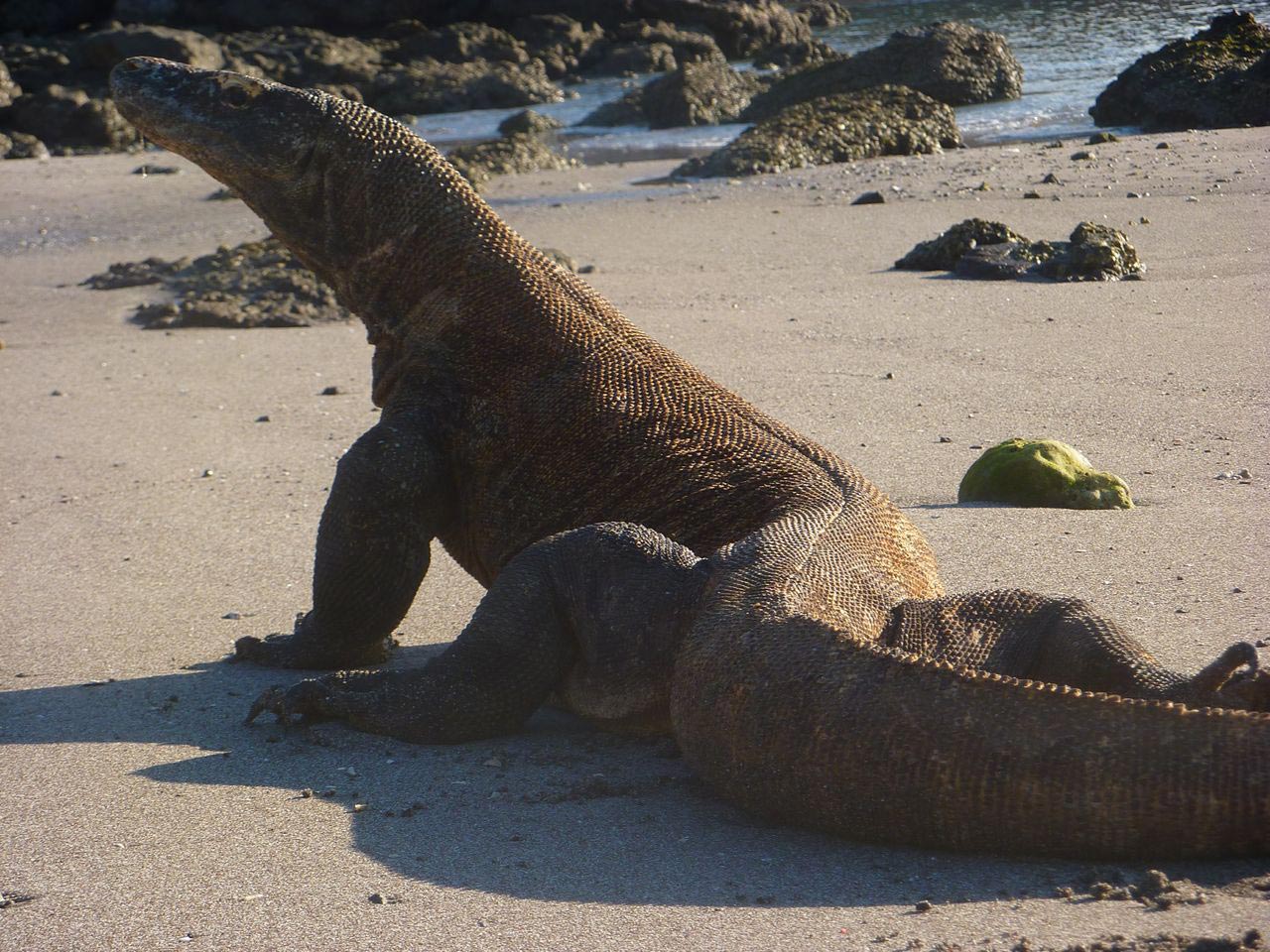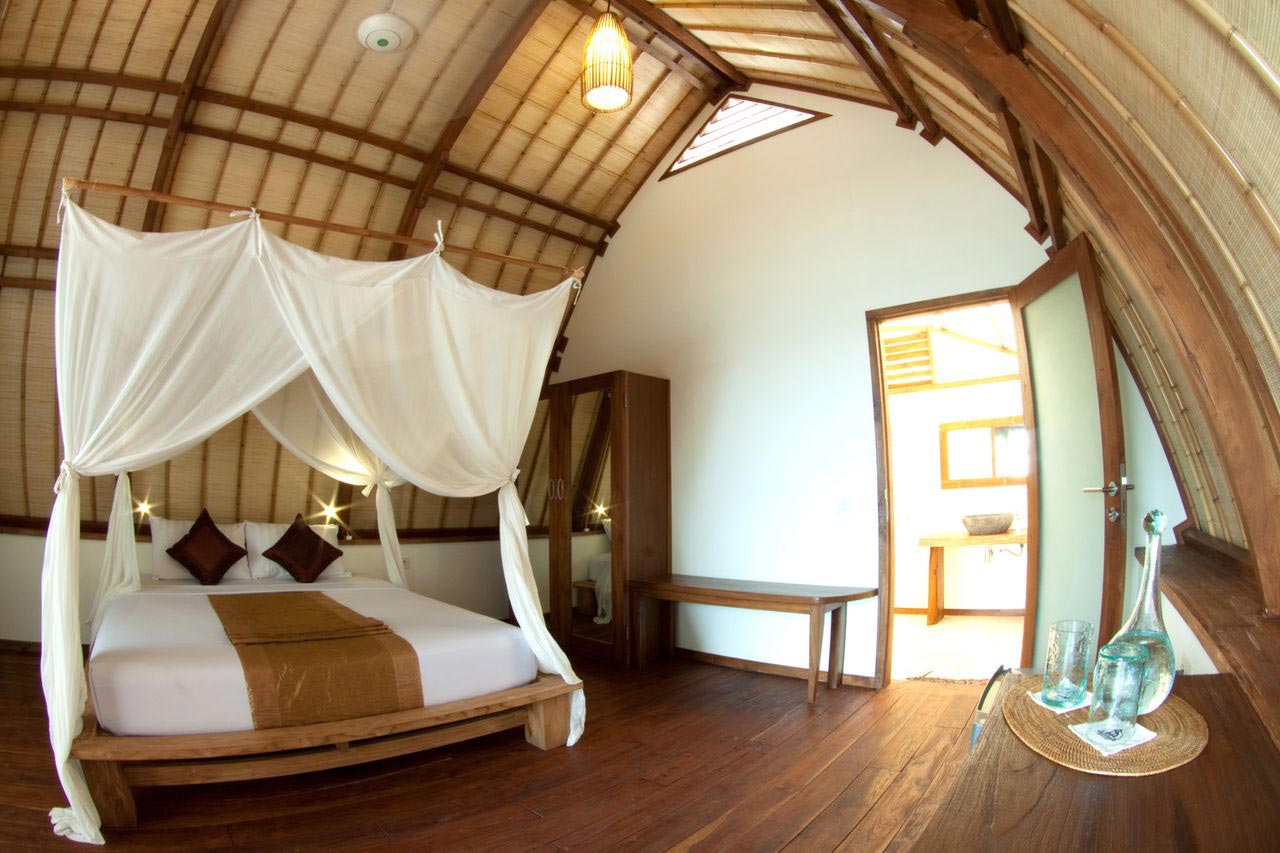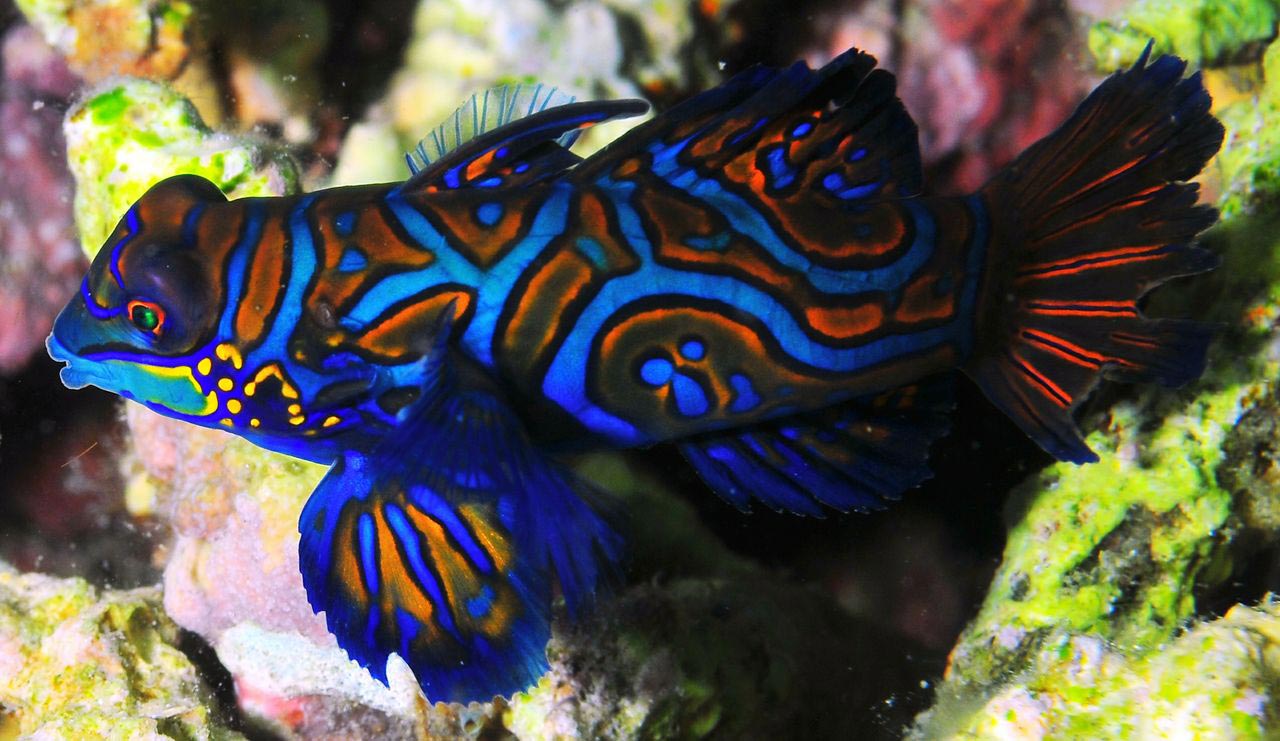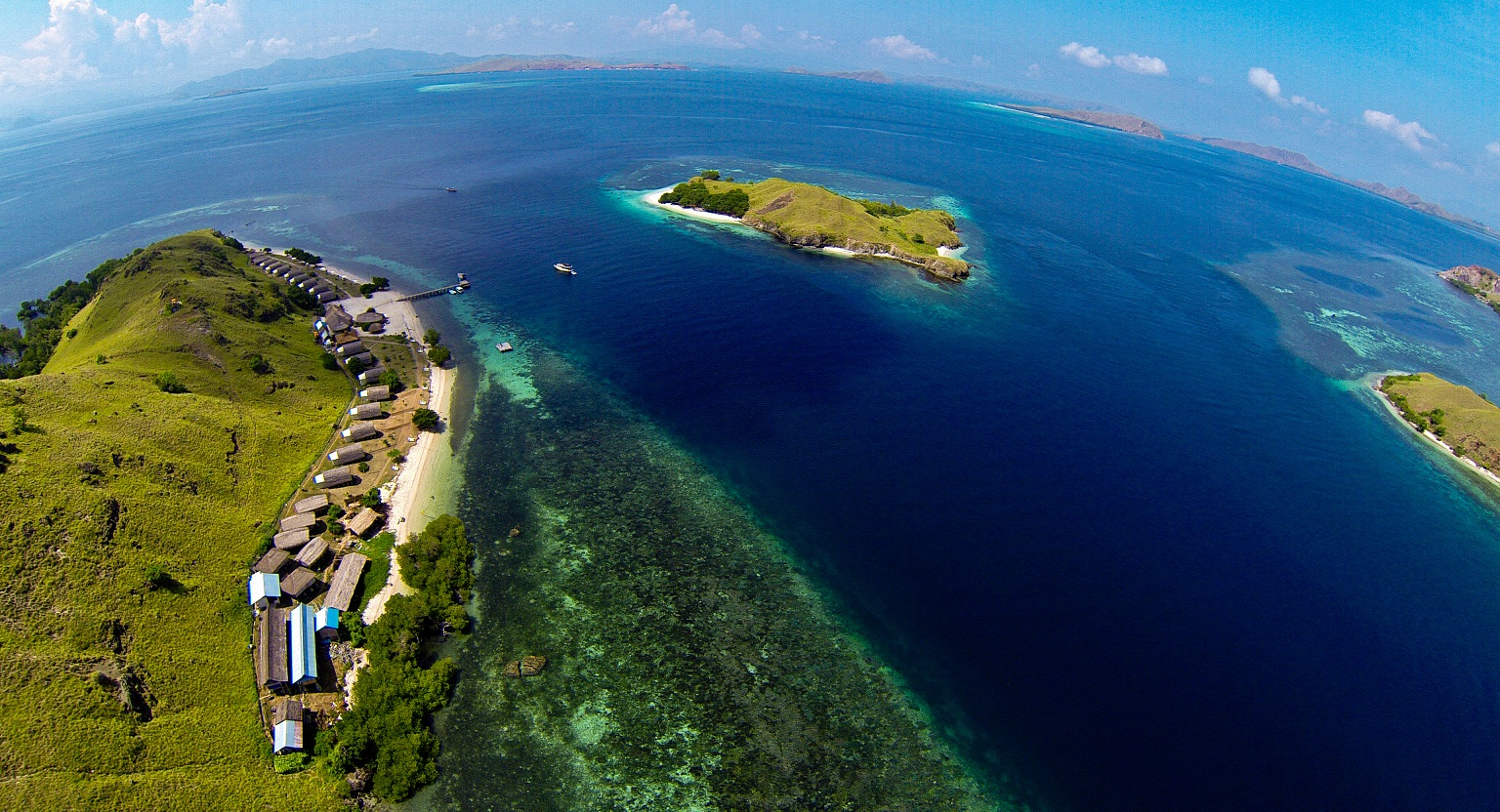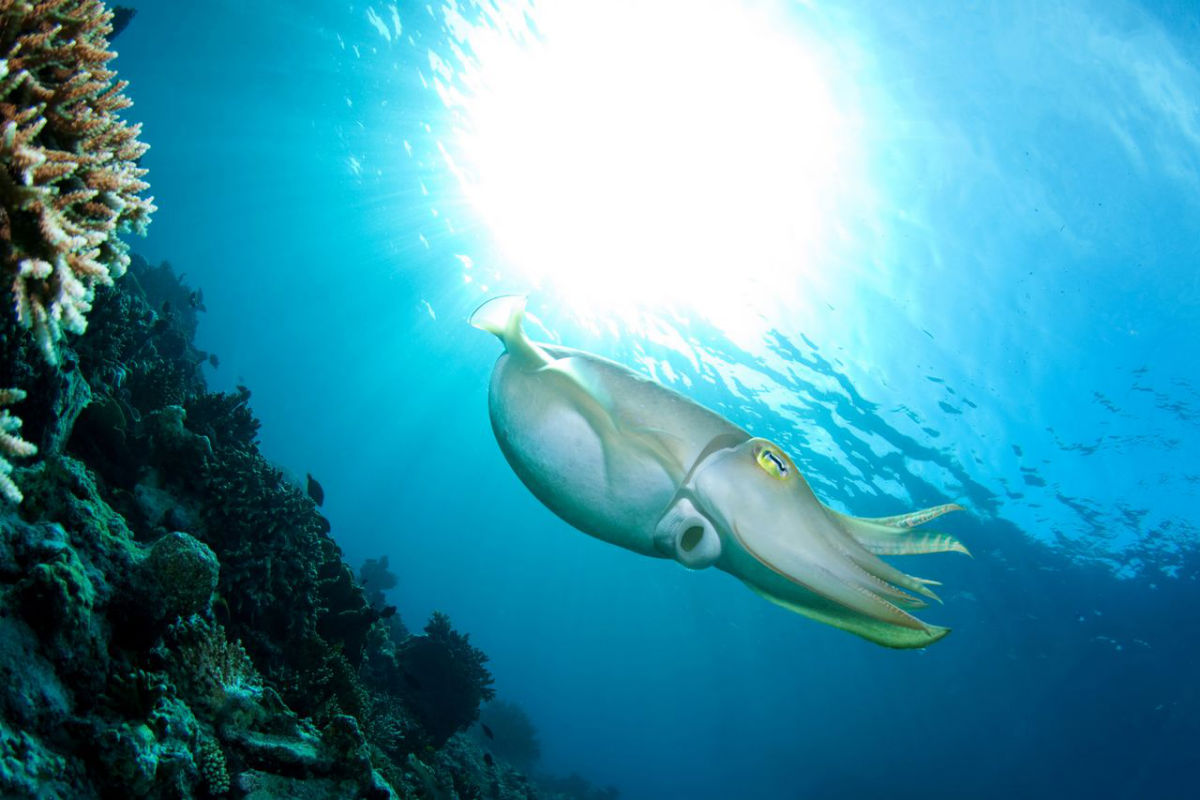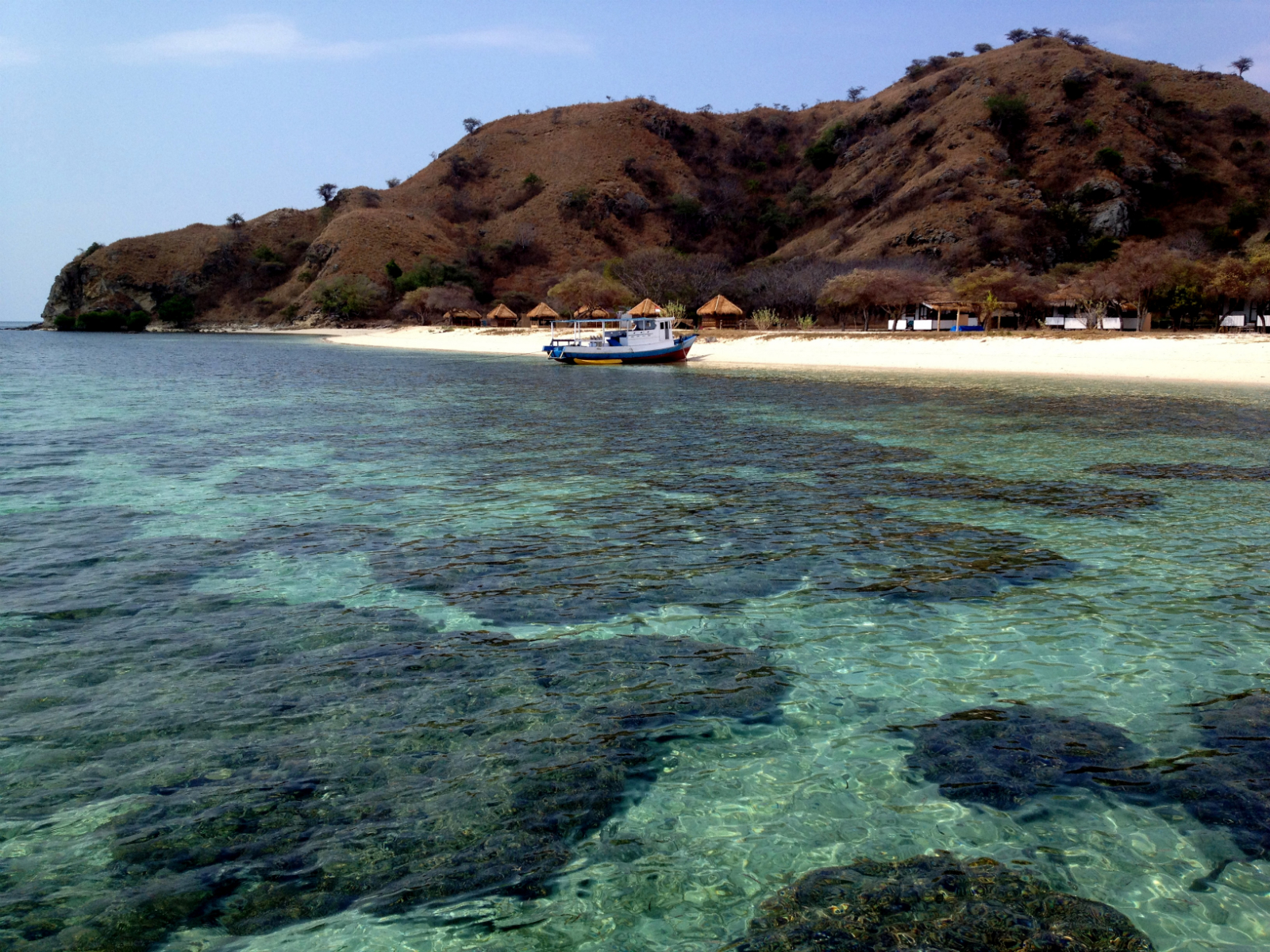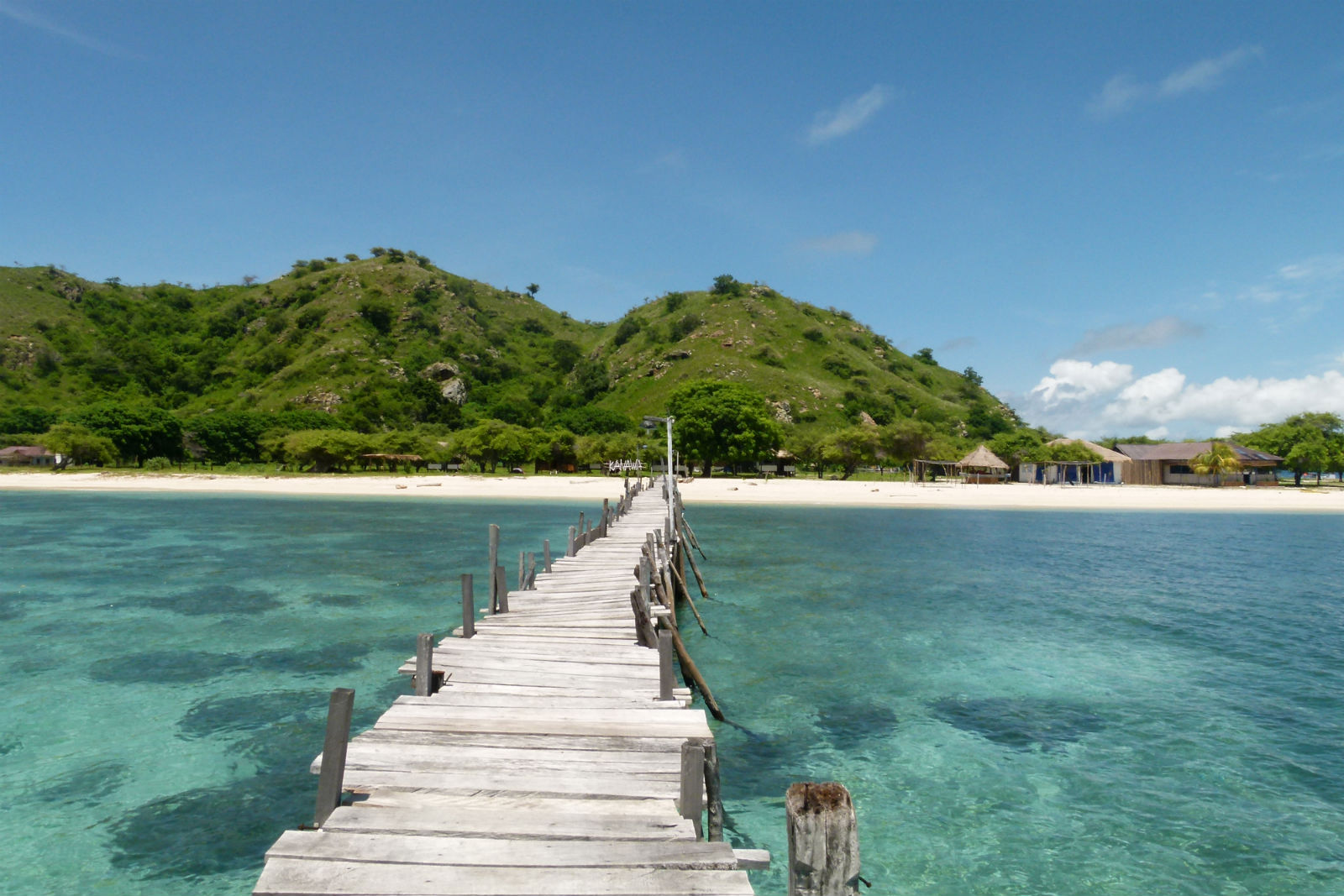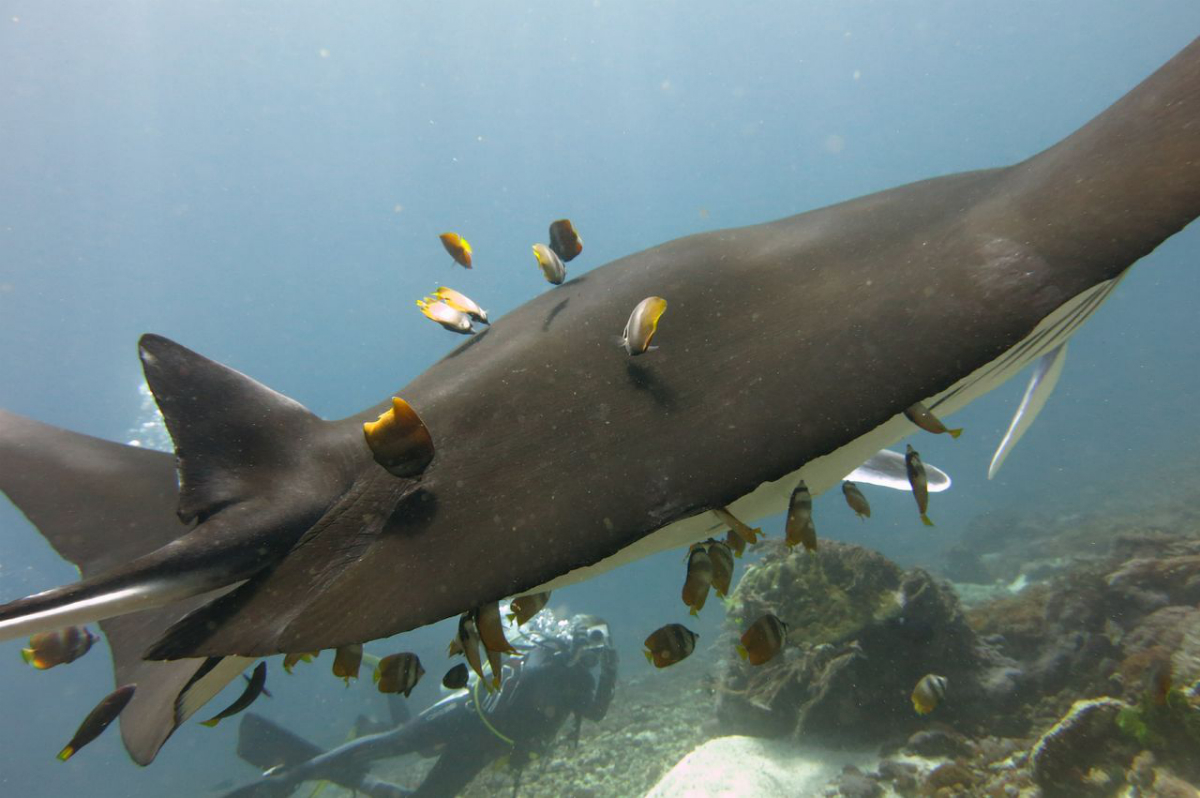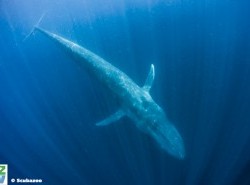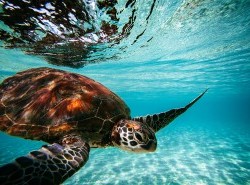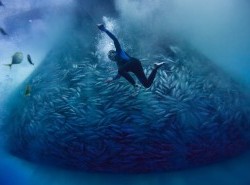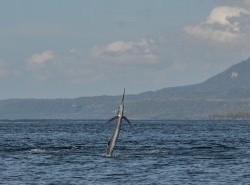Batu Bolong doesn’t look like much - a non-descript rock jutting out of the ocean in Komodo National Park. But it’s a tourist attraction to rival the giant lizards that made this protected marine reserve in eastern Indonesia famous. Not the grey bit above the surface, but the rest of it - a 75-metre wall that is riotous with marine life. Our Italian guide Stefano Piazza has billed this as one of the best dive sites in the world, but it’s been years since I’ve dived and I’m nervous. Stefano isn’t helping. “You can see how popular this spot is – but it is also the deadliest dive site in Komodo!” he exclaims cheerfully. Apparently, hapless divers who stray past the wall’s edge risk being dragged to the bottom by powerful down currents.
Intrepid dive explorers and Dragon chasers have been making expeditions to the Komodo Archipelago – named for the largest of its 29 islands – since the eighties. But it’s only in the last five years that arrivals into Flores, the much larger island east of Komodo that’s the gateway to the Park, have really started swelling. Foreign arrivals topped 60,000 in 2013, up from 50,000 the year before. It helped that Komodo was named one of the New Seven Wonders of Nature in 2011, while its proximity to booming Bali has sparked a rush of new development.
“Three years ago, there was hardly any interest in Flores or Komodo,” Stefano tells me, gesturing at his private island, Sebayur Besar. We were lucky to get the lease on this place when we did, because now everyone’s buying up real estate.” Our day’s diving over, we pull up to a neat wooden jetty. Behind it, undulating hills of russet grass give onto a dazzling white beach and a fringing reef, visible beneath the limpid water. Thatched beach bungalows perch on stilts along the shoreline and a cluster of sinuously curved bamboo pavilions serve as the restaurant, dive centre and lounge.
Over a surreal but excellent 5-course dinner - authentic melt in the mouth gnocchi and spicy Indonesian style fish – Stefano tells me he’s spent the last 18 years leading expeditions into the remoter parts of New Guinea. He and his partners opened Komodo Resort Diving Club (www.komodoresort.com) in 2011 – “I thought it was time to settle somewhere less remote,” he muses without a trace of irony. Though the don’t trumpet the fact, the resort has some solid eco credentials - WHAT
Sebayur Besar is 200m from the edge of the 1700km² Park (land based resorts aren’t allowed within its boundaries) and has 20-30 world-class dive sites within easy reach. It’s also just an hour by speedboat from Labuan Bajo, the ramshackle harbour town on the Flores mainland that’s the jumping off point for the spectacular seascape. It’s the third offshore resort to have sprung up on the Park’s borders over the last four years – luxury eco resort Angel Island opened in 2010 and backpacker favourite Kanawa Beach a year later.
If Komodo Resort has the après-scuba down pat (think giant bean bags and iced drinks on the boat’s snazzy sun deck), Kanawa Beach (www.kanawaislandresort.com) has…well, the beach. And the kind of mellow island vibes that you get by combining said stretch of sugary white sand with excellent snorkelling off the jetty, pared down beach bungalows (there are tents for committed Robinson Crusoes) wood fired pizzas, cold beer and reggae that sounds like it’s being played on a blown guitar amp. I meet a French free diver who’s been here for eight days “to unwind.” It turns out she lives on Koh Tao island in Thailand. Kanawa is low impact too and takes pain to recycle water
It takes the prospect of swimming with manta rays to rouse me from my tropical torpor. There’s an independent dive operation on Kanawa managed by Englishman Ed Statham, whose swarthy complexion and arbitrary tattoos are testament to his commitment to the lifestyle. Manta Point is another legendary Komodo dive site, which is shallow enough to snorkel. It’s a drift dive along a featureless sandy bottom, but the payoff comes when six shadowy shapes materialize out of the deep blue. I’m struck by their size – their wingspans must be four or five metres. They oscillate gently to counter the current while tiny fish feast on their skin.
There is one more excursion to see the world’s largest living lizards – not for the first time. On Komodo Island a few years ago I had to high tail it out of the forest with five slavering dragons in hot pursuit after a park ranger deprived them of the goat they were trying to devour. It had been hung from a tree as a lure and when it was pulled from their reach they turned their cold reptilian gazes onto me. I remember gingerly poking one with the forked stick the rangers use to fend them off, realizing with a rush of dread that it was going to eat me and promptly legging it. They’ve held a strange fascination ever since. I head to Rinca, a smaller island an hour from Labuan Bajo, where spindly lontar palms punctuate a surreal savannah landscape. But at Midday they are behaving much as lizards will when the sun is high – snoozing. I head back to my hammock at Kanawa and follow suit.
